Lychee is often called - Chinese plum. The fruits grow on a tree in the tropics and have a sweet and sour flavor. Before eating berries, we recommend that you study the composition and properties of Chinese lychees, which you will learn about from our article.
Material Content:
What are Chinese Litchi
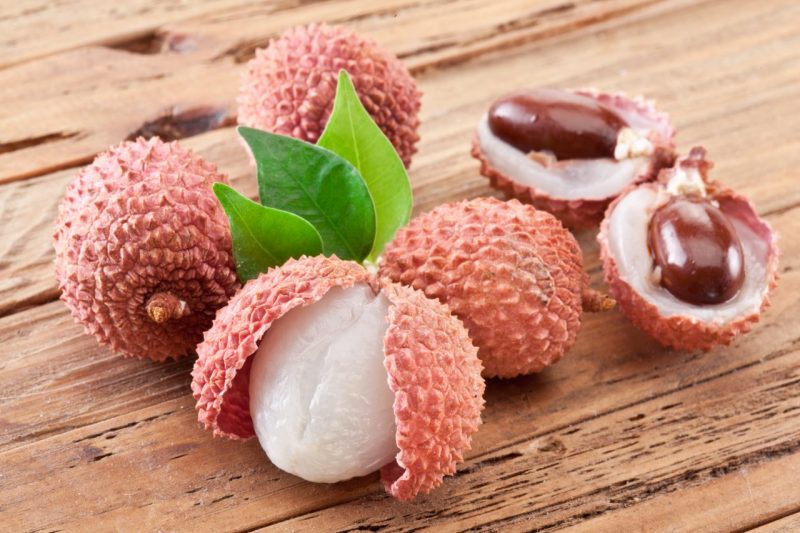
The fruits grow on an evergreen tree, which has a spreading, wide crown and a height of up to 30 meters. The leaves are pointed and have a pleasant aroma. In the world there are 2,000 species of lychee. The crop of berries ripens in clusters from early May to late June. The fruits have good taste and healing properties. They are used for treatment and as a prophylaxis for many diseases.
What does the Chinese plum look like and where is its homeland
Small oval Chinese lychee. Their length is approximately 2.5 - 3.5 centimeters, and the weight does not exceed 20 grams. From the name of the fetus, you can understand where it came from. The birthplace of lychee is China, as evidenced by documents that are dated to the second century BC. e. In Europe, the existence of fruit was found out only in the 17th century.

The fruits are pink or red. The peel is dense with tubercles. To try the fruit, the peel must be removed.
A brown stone is hidden in the flesh, which shines like a horse chestnut. Due to the unusual structure - a brown seed inside the white pulp, the lychee was called - the eye of a dragon.
When buying fruits, you should pay attention to the color of the peel. If it is dark, then the fruit is harvested a long time ago. Such fruits will be tasteless and bring little benefit.Fresh lychee is characterized by a red, slightly soft peel without damage.
Taste and smell of fruit
The fruit has a juicy pulp of white color, which is similar in texture to a plum, and tastes like grapes. The fruit has a sweet and sour taste similar to strawberries and a little currant. Fruit of the highest quality, which is consumed fresh. Also, the fruits are canned, dried and frozen.
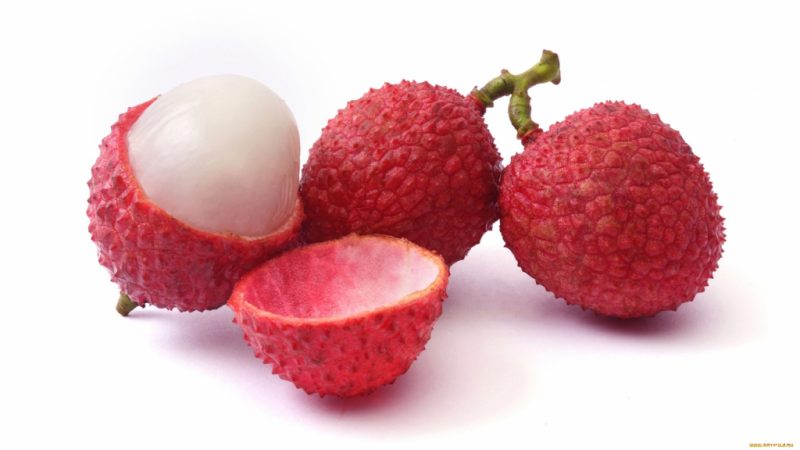
The most amazing thing about the fruit is the smell of flesh. No gourmet can describe it in ordinary words. The aroma is delicate, somewhat reminiscent of the aroma of jam.
Those who have tried the tropical fruit once fall in love with it for life. In Asia, lychee is ahead of all fruits in popularity. It is famous for its taste and nutritional properties.
No matter how much fruit is eaten, it will not leave heaviness in the stomach. It is impossible to overeat.
Composition, calories and nutritional value
Lychee is low-calorie and nutritious. In 100 g of the product, only 66 kcal. The composition includes carbohydrates - 16.53 g, fats - 0.44 g, dietary fiber - 1.5 g, proteins - 0.83 g, disaccharides - 15.23 g, water - 81.76 g.
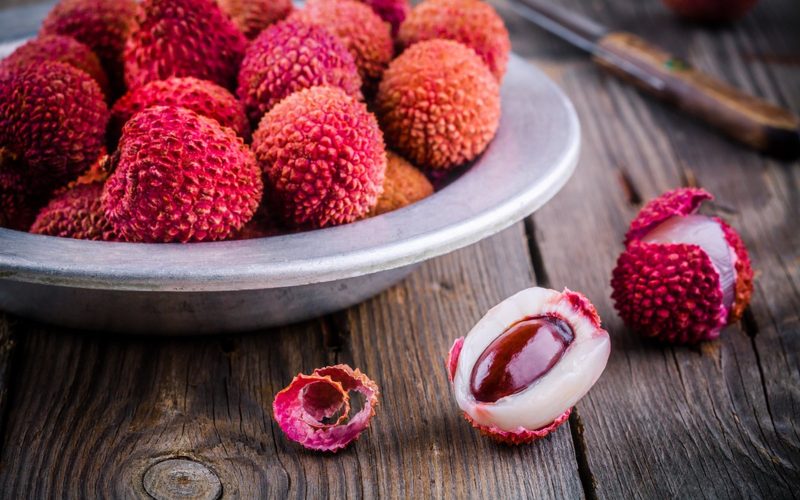
Fruits include in the composition of the substance:
- magnesium;
- iron;
- fiber (fights constipation);
- vitamins E, H, K;
- Vitamin B (improves memory, helps the liver work)
- potassium (responsible for the performance of the brain and heart);
- manganese;
- phosphorus (responsible for the formation of bone tissue);
- calcium;
- fluorine;
- vitamin C (removes free radicals);
- chlorine;
- copper (supports the circulatory system)
- iodine;
- sodium;
- zinc;
- folic acid (has an antimicrobial effect);
- sulfur;
- selenium.
The amount of sugar depends on the region where the fruit grows. On average, about 5-15%.
Chinese lychee: beneficial properties
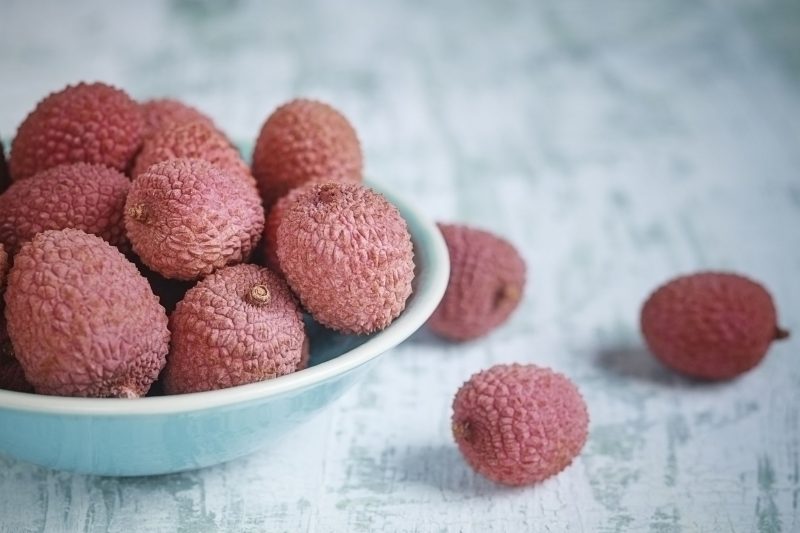
Lychee favorably affects the entire body, namely:
- It provides assistance in the treatment of cardiovascular ailments. In China, it is used to lower cholesterol.
- Nutritionists advise using lychees to quench hunger. Fruit contributes to weight loss, helps to actively fight body fat.
- It is a natural aphrodisiac that has a tonic effect on the body and gives a man sexual strength.
- Helps prevent the development of atherosclerosis.
- It is recommended to use for people who suffer from diabetes, liver disease, peptic ulcer disease, anemia and gastritis.
- Relieves fatigue, reduces depression and neurosis.
- Normalizes the work of the stomach and intestines. Relieves constipation and quenches thirst.
- Beneficial effect on the body with kidney disease;
- The fruit contains beneficial minerals and vitamins that help keep the body fit.
- Helps fight colds;
- With regular use, the risk of developing oncology is reduced. With the use of fruits, drug preparations are prepared that help fight cancerous tumors in the initial stage.
Lychee has found application in folk medicine. On its basis, decoctions and infusions are produced that have a beneficial effect on the body in various diseases.
Recommended for use with:
- asthma
- bronchitis;
- tuberculosis.
In order for diabetics to normalize sugar levels, it is enough to consume only 10 fruits per day.
Contraindications to the use of fruit
There are practically no contraindications to use. Litchi can cause harm to the body, only with individual intolerance.
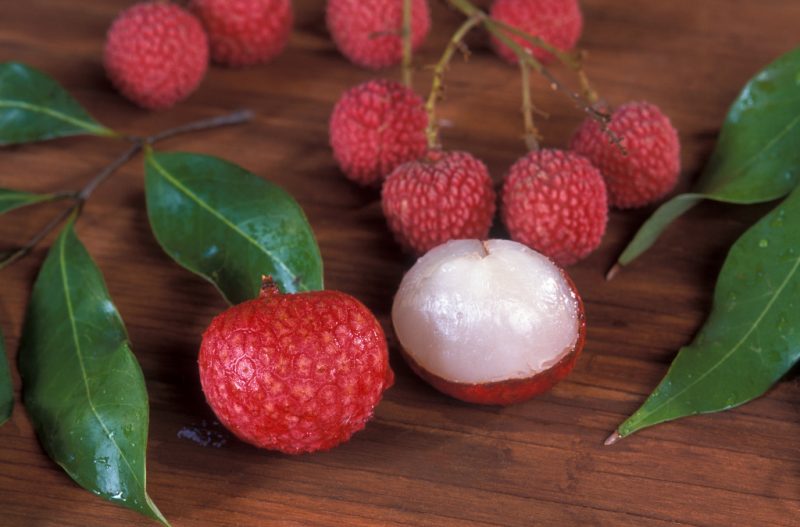
With limitless eating of fruits, an allergy may appear. Children are allowed to eat lychee daily, but not more than 100 grams per day, otherwise acne and redness will appear on the body. With excessive consumption of fruits by adults, the mucous membrane of the oral cavity can suffer and flatulence can develop.
Caution should be taken by people following a protein diet, as it can provoke a violation of the intestines.
People's advice:fir oil
How to grow lychee
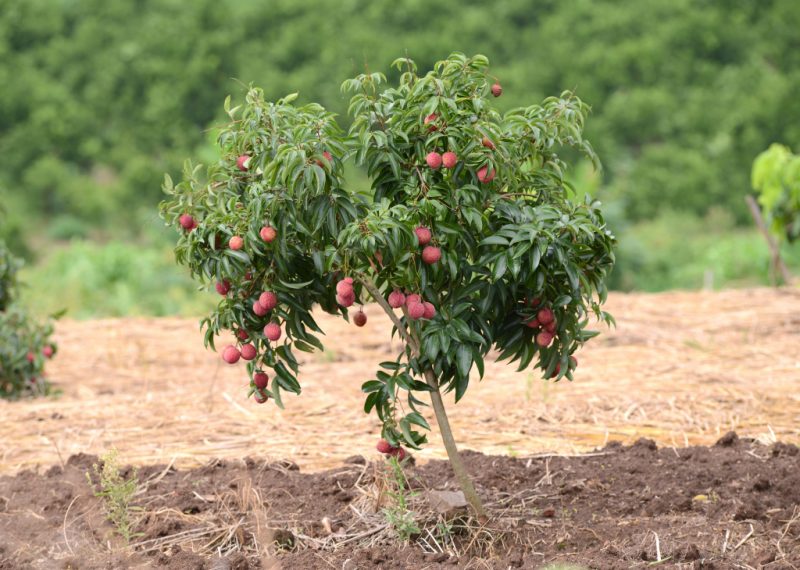
- You can grow Chinese lychee fruit at home. To do this, you need to purchase a ripened fruit and get a seed.Of unripe lychees, the seed will not sprout. Choose a fruit with a strong aroma, hard red peel.
- In order to increase the likelihood of successful germination, it is necessary to plant seeds immediately after extraction. Seeds are viable for no more than four days. Undeveloped, shriveled, and irregularly shaped bones cannot be used for planting.
- Plant in separate containers, you can use a cup of sour cream. Then immediately create greenhouse conditions. To do this, tighten the surface with a film or regular bag. Until the seed sprouts withstand a temperature of 35 degrees.
- Take cover every day and let the soil get enough oxygen. Keep the soil dry.
- As soon as you see the sprouts - reduce the temperature to 25 degrees. Germination will take about two weeks. Depending on the temperature, it may take longer.
- You will notice active growth until the fruit reaches a height of 20 centimeters. Then a couple of years the root system will develop. During this period, seedlings should not be fertilized intensively. The first time, the foliage will be painted whitish, and after a while it will turn green.
- Every day, the future tree needs lighting for at least 13 hours. Therefore, in the winter, you should take care of the backlight.
- Strictly watch the watering. The soil should not be flooded and should not be dry. Use only standing water. The next watering should be done only when the top layer of the earth dries.
- For full development, spray the leaves several times a day.
- It is possible to feed for the first time only after three months, then with an interval of two months during the first year.
- You can trim in the first two years to give an aesthetic appearance to the tree.
- Cross pollination is required for the plant.
- To establish flower buds and develop, create seasonal temperature fluctuations. Summer should be wet and warm. And in winter, the temperature should be lowered.
If all the recommendations are followed, after seven years you will be able to see flowering and fruiting.












